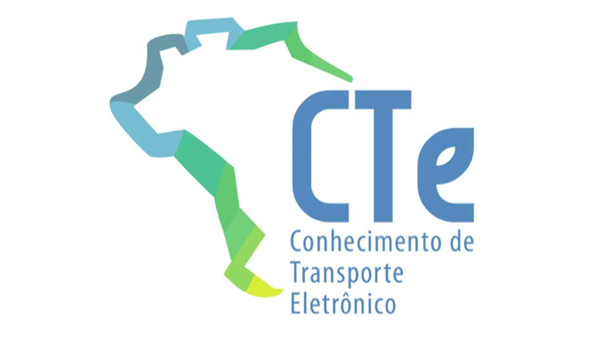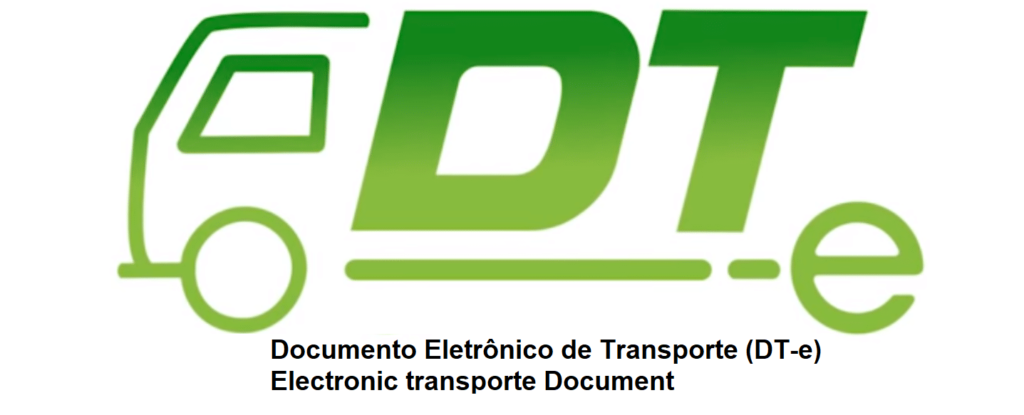
Brazil expands visa-waiver policy for Chinese...
read more

Although the CT-e was introduced in 2007, foreign shipowners and their liability insurers still raise questions about the legal implications of using this digital platform
Brazil’s electronic bill of lading gradually became mandatory ten years ago for companies and self-employed hauliers providing in-country transport services by road, waterway, air, rail, pipeline, or multimodal, as reported in this circular.
While local businesses are used to the paperless system, foreign owners who charter vessels to Empresas Brasileiras de Navegação – EBN (Brazilian shipping companies) to operate in domestic navigation often have doubts about the nature of the electronic document and the potential risks and liabilities in its use compared to a conventional paper bill of lading.
This article explains how the CT-e platform and other transport-related e-documents work and the safeguards available to shipowners engaged in the cabotage.
The Conhecimento de Transporte Eletrônico – CT-e (electronic bill of lading, in Portuguese) is issued and stored electronically to document, for tax control, information relating to transport services and circulation of goods in Brazil, to streamline processes in harmony with other e-trade tools. It replaces a series of documents and forms that previously needed to be printed on paper and physically distributed to different parties.

The CT-e is evidence of the contract of carriage, receipt of cargo delivery by the shipper to the carrier, and an invoice (fiscal bill of services). However, unlike a traditional bill of lading, it does not function as a document of title to the goods. After it is issued, It cannot be transferred or endorsed to third parties. Thus, the named consignee does not need to surrender any document to the carrier in exchange for the goods, as there is no risk of misdelivery.
In effect, while the sea carrier discharges the goods at the port of destination indicated in the CT-e, the port facility or inland customs-bonded terminal is responsible for the actual physical delivery to the consignee after authorisation from the relevant tax authorities. In the case of door-to-door service, typical in the container trade, the sea carrier is responsible for picking up the cargo at the place indicated by the shipper/sender and delivering it at the place indicated by the consignee/receiver or service taker.
The Ministry of Finance manages the national CT-e platform. The data is shared among state tax offices (SEFAZ) at the places of receipt and delivery and Customs authority, the national repository of all CT-e issued.
CT-e generated in conformity with the legislation, secured by digital certification, validated and registered with tax authorities, enjoys complete legitimacy in the national territory.
The CT-e file consists of an XML document incorporating cargo invoicing data and information about the mode of transport, vehicle, destination, freight value, quantity weight, and marks, among others, for taxation and bookkeeping purposes.
Before carriage begins, the shipper/seller sends the file with the electronic invoice (NF-e) through a web application to the carrier, an EBN (or outsourced service provider) in the case of waterborne transport. The EBN feeds the system with supplementary information, including the name of the ship or barge and any cargo pre-shipment exceptions, and transmits the digitally signed file to the SEFAZs and Customs for validation and authentication. The file contains a number of mandatory fields verifiable by authorities before granting permission to issue the document.
Once validated, the EBN generates the CT-e and distributes it electronically to the shipper/seller and consignee/buyer for reference and verification of accuracy and authenticity. At this point, the “DACTE,” a graphical representation of the CT-e with basic information about the shipment, is printed to accompany the goods until final delivery.
The entire process takes no more than a few minutes unless the data provided contains inaccuracies or errors. Contingency plans are in place should the system go offline or undergo maintenance.
The printable, abridged version of the CT-e is the Documento Auxiliar do Conhecimento de Transporte – DACTE (CT-e’s Auxiliary Document) in easy-to-read PDF format. The DACTE does not replace the CT-e and is not a tax document itself. Instead, it is merely a summary featuring basic information about the shipment to follow with the goods until delivery to the consignee.
This auxiliary document contains a 44-position access key and a barcode (or QR code) to verify its authenticity and validity on the CT-e Portal. It remains available for public consultation on the federal or state tax authority’s website for up to 180 days.
Since there is no reverse side on the CT-e, terms and conditions applicable to the carriage are referred to in the ‘Observation’ field of its printable summary (DACTE). These can also be accessible for consultation via a hyperlink to the carrier’s website or a landing page.
The sea carrier’s liability is limited to the cargo value, as stated in the CT-e. In multimodal transport, freight and insurance are added to the cargo value to form the compensation due.
While the time bar for claims for cargo shortage or damage under a CT-e is one year from discharge, the same as an ordinary B/L, for fiscal controls, the term for the EBN, shipper/seller, consignee/buyer and service taker, if any, to securely store the relevant XML files is five years from the date of issue.
The rules of the P&I clubs who are members of the International Group of P&I Clubs (IGP&I) provide that liabilities arising from the carriage of goods under paperless trading systems are covered, provided that the IGP&I has previously approved the system.
Carriers trading in the Brazilian cabotage would not have greater exposure or liabilities by the compulsory use of the CT-e system than they would have had they used an ordinary paper bill of lading.
In fact, although it is called an electronic bill of lading, IGP&I does not regard the CT-e platform in its definition of an e-trade system; therefore, there are no implications for the P&I cover afforded to members who rely on this mandatory system when carrying domestic cargo.
Time has proven that using CT-e is safe and does not attract more liabilities than resorting to an ordinary bill of lading. Nevertheless, as an additional safeguard, foreign owners chartering their ships to EBNs may wish to demand the inclusion of a “CT-e clause” in the charter party or even a letter of indemnity whereby Brazilian charterers hold the shipowners harmless from liabilities for any fines or penalties imposed on cabotage trade, while ensuring that any delays to the vessel resulting from the use of CT-e will count as laytime or, if already in demurrage, as time in demurrage.
Under the applicable law and regulations, the EBN remains responsible to the tax authorities for validating, authenticating and storing the e-bills of lading it issues.
Over the past two decades, Brazil has gradually implemented other transport-related paperless document platforms to simplify business transactions, tax collection on the circulation of goods and services, and bookkeeping processes. These e-documents work similarly to the CT-e, as they must be authenticated electronically and validated in real-time by the competent tax authorities to have legal standing.
The Nota Fiscal Eletrônica – NF-e (electronic invoice) is a receipt for the purchase of the goods issued by the seller. It is the basis for calculating federal, state and municipal taxes levied on sales and must cover all goods circulating in the domestic market. As the collection systems by the various tax authorities are interconnected, NF-e data are referenced in the corresponding CT-e.

The graphical, printable representation of the NF-e is the Documento Auxiliar da Nota Fiscal Eletrônica – DANFE (NF-e auxiliary document). Its authenticity can be verified on the NF-e Portal.
While the NF-e is limited to documenting the sale of goods, its equivalent, the Nota Fiscal de Serviço Eletrônica – NFS-e (electronic services invoice), is used to register and calculate taxes on services rendered. The NFS-e is generated in the NFS-e Portal, where its authenticity can be checked.
The MDF-e reader-friendly and printable version is the Documento Auxiliar do Manifesto Eletrônico de Documentos Fiscais – DAMDF (auxiliary document of the electronic fiscal document manifest) to accompany the shipment, digitally or on paper, and allows access to the MDF-e data for inspection of goods in transit within the country.

In 2021, the federal government approved Law 14,206 introducing the Documento Eletrônico de Transporte – DT-e (electronic transport document), which promises to be more than another paperless system. It is expected to be a one-stop platform to reduce bureaucracy and merge dozens of existing tax and transport documents in one place.

As this article explains, existing e-documents, such as the CT-e and NF-e, would be incorporated, but not replaced, by the DT-e. It is still pending regulation, and there is no forecast of when it will come into force, much less when it will become mandatory.
Please read our disclaimer.
Related topics:
Rua Barão de Cotegipe, 443 - Sala 610 - 96200-290 - Rio Grande/RS - Brazil
Telephone +55 53 3233 1500
proinde.riogrande@proinde.com.br
Rua Itororó, 3 - 3rd floor
11010-071 - Santos, SP - Brazil
Telephone +55 13 4009 9550
proinde@proinde.com.br
Av. Rio Branco, 45 - sala 2402
20090-003 - Rio de Janeiro, RJ - Brazil
Telephone +55 21 2253 6145
proinde.rio@proinde.com.br
Rua Professor Elpidio Pimentel, 320 sala 401 - 29065-060 – Vitoria, ES – Brazil
Telephone: +55 27 3337 1178
proinde.vitoria@proinde.com.br
Rua Miguel Calmon, 19 - sala 702 - 40015-010 – Salvador, BA – Brazil
Telephone: +55 71 3242 3384
proinde.salvador@proinde.com.br
Av. Visconde de Jequitinhonha, 209 - sala 402 - 51021-190 - Recife, PE - Brazil
Telephone +55 81 3328 6414
proinde.recife@proinde.com.br
Rua Osvaldo Cruz, 01, Sala 1408
60125-150 – Fortaleza-CE – Brazil
Telephone +55 85 3099 4068
proinde.fortaleza@proinde.com.br
Tv. Joaquim Furtado, Quadra 314, Lote 01, Sala 206 - 68447-000 – Barcarena, PA – Brazil
Telephone +55 91 99393 4252
proinde.belem@proinde.com.br
Av. Dr. Theomario Pinto da Costa, 811 - sala 204 - 69050-055 - Manaus, AM - Brazil
Telephone +55 92 3307-0653
proinde.manaus@proinde.com.br
Rua dos Azulões, Sala 111 - Edifício Office Tower - 65075-060 - São Luis, MA - Brazil
Telephone +55 98 99101-2939
proinde.belem@proinde.com.br